Contents
Description
Dates are the fruits of the palm; they have a stone inside. People eat them mainly as dried fruits and have a delightful taste.
Regular consumption of dates helps lower blood cholesterol, which means it reduces the likelihood of developing cardiovascular diseases, particularly atherosclerosis. Besides, these fruits’ consumption helps to lower blood pH levels and slows down the aging process. This is the conclusion of Israeli scientists.
History of dates
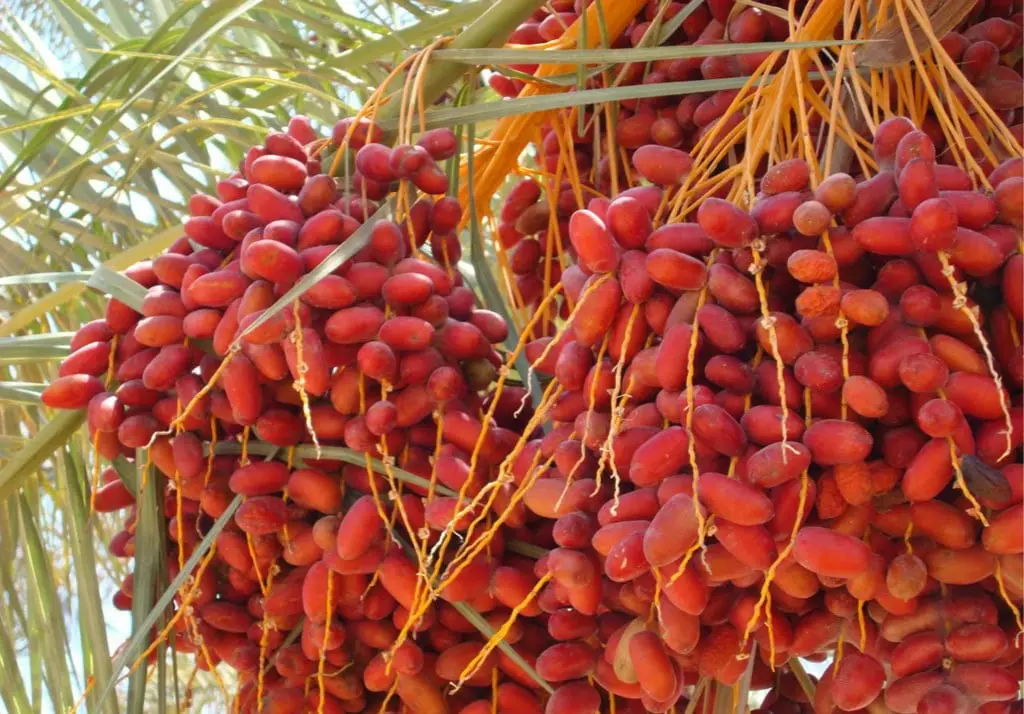
People believed that dates contain all the necessary substances for humans in ancient times, and, eating only them and water, you can live for several years. The experience of some historical figures confirms this.
The homeland of this plant is the Middle East. They were a staple in the Arab diet. People collected wild dates in ancient Egypt. Images of the process of collecting fruits are on the walls of tombs. The people of Babylon used these fruits to make vinegar and wine. These fruits are also very valuable in Islam – there are 29 mentions in the Quran.
The palm leaves in southern Europe are used for religious purposes. Palm wine “Tari” is prepared from the leaves of the Indian species.
Date varieties
Saudi Arabia is the world leader in the production and sale of dates. They are an important agricultural crop in Iraq, Arabia, North Africa, Morocco. However, palms came to other parts of the world and are now growing in the United States (California), Mexico, Australia, South Africa, and other countries. For Arabs, these fruits replace bread. In Islamic countries, dates and milk are the traditional first food after sunset during Ramadan.
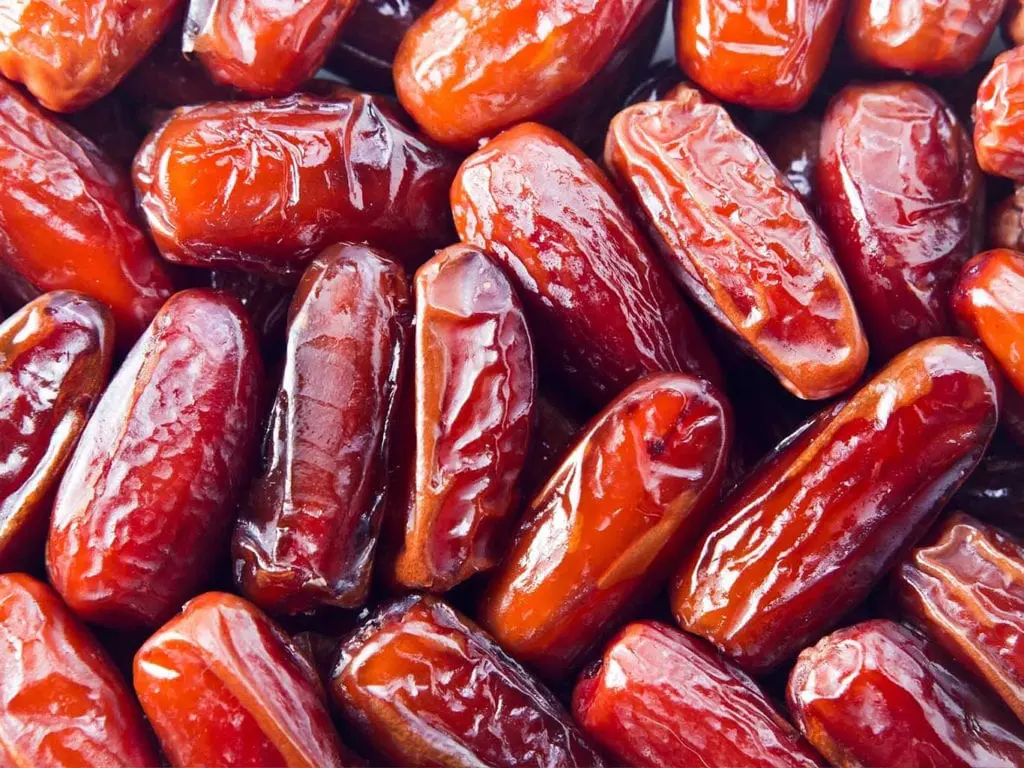

The date palm originated from the Persian Gulf and has been cultivated as early as 6000 BC. It is a tall tree with huge, long leaves. Unripe fruits are oval-cylindrical, 3-7 cm long, 2-3 cm in diameter. When unripe, they range from bright red to bright yellow, depending on the variety. The fruit contains a bone 6-8 mm thick. There are over 1,500 varieties of dates.
Chinese date.
It is also called jujuba or unabi. This is the fruit of a thorny bush or tree 3-9 m high (Zizyphus jujuba Mill). It grows in Mediterranean countries and Asia. The fruits of this date variety are small, reddish-brown, oval, and fleshy. You can eat it both fresh and dried and cured.
Jujuba is used to make tortillas and syrups. It is basically popular in Asian cuisine: in China, Japan, Indochina, fresh and mostly dried, since Chinese dates become more aromatic from lying. They are part of many spices, jelly, mousse, and jam.
Canary date.
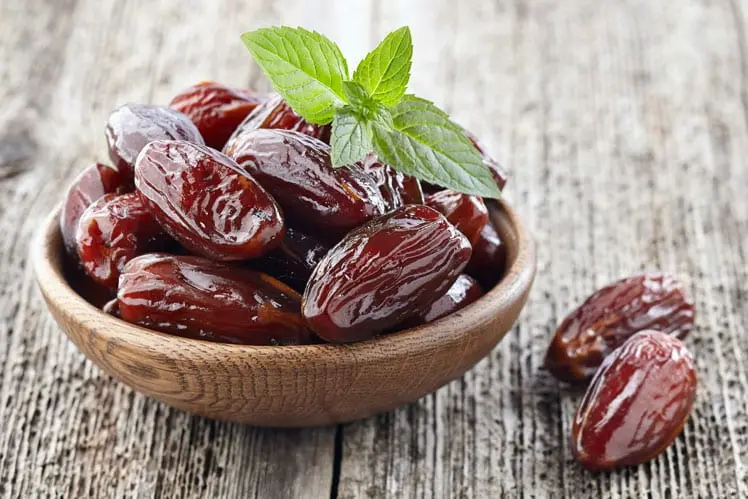

This date is grown as an ornamental plant and also as a fruit crop. His homeland – the Canary Islands, grows in rocky and stony places. This species has been cultivated since the end of the 19th century. This is a palm tree with a straight trunk up to 3 m high, covered with the remains of leaf bases, and having a columnar shape.
The plant grows up to 6 m in height; its pointed leaves are very hard, they can hurt hands. Therefore, dates grow only in spacious rooms. But palm leaves are also used for medicinal purposes. The plant sap a treatment for burns, infectious and skin diseases. Compresses from crushed palm leaves are made for mastopathy.
Dates are classified into soft, semi-dry, and dry dates depending on the ripe fruit’s softness. Another classification is based on the type of sugar in the ripe fruit: invert sugar dates containing dextrose and glucose and cane sugar dates containing mainly cane sugar (sucrose).
Most soft varieties have invert sugar, and most dry dates have cane sugar. Dry types of this fruit have little moisture. Simultaneously mild or semi-dry varieties contain a significant amount of water and deteriorate faster unless the fruits are left to get dry naturally or artificially.
A fully ripe fruit is a fleshy fruit with a golden brown smooth skin.
Composition and calorie content
Scientists believe that 10 dates a day are enough to meet the daily human need for magnesium, copper, sulfur, half of the need for iron, a quarter of the need for calcium.


100 g of of these fruits contain: 20.0 g of water, 2.5 g of proteins, 0.5 g of fat, 69.2 g of carbohydrates, 0.1 g of unsaturated fatty acids, 69.2 g of mono- and disaccharides, 6.0 g dietary fiber, 0.3 g of organic acids, 1.5 g of ash. In addition, vitamins (B, – 0.05 mg, B2 – 0.05 mg, B3 – 0.8 mg, B6 – 0.1 mg, C – 0.3 mg, PP – 0.8 mg) and trace elements (iron – 1.5 mg, potassium – 370.0 mg, calcium – 65.0 mg, magnesium – 69.0 mg, sodium – 32.0 mg, phosphorus -56.0 mg). Calorie content – 274.0 kcal. 1 kg of dried dates contains about 3000 calories.
- Proteins 2.5 g
- Fat 0.5 g
- Carbohydrates 69.2 g
The benefits of dates
Dates have the highest percentage of carbohydrates of any other fruit – over 60 percent, but these sugars are not very harmful to the body. After all, dates also contain acids: niacin, riboflavin, and pantothenic acid. They promote the absorption of carbohydrates, regulate blood glucose levels. These fruits contain 23 more types of various amino acids that are not found in most other fruits.
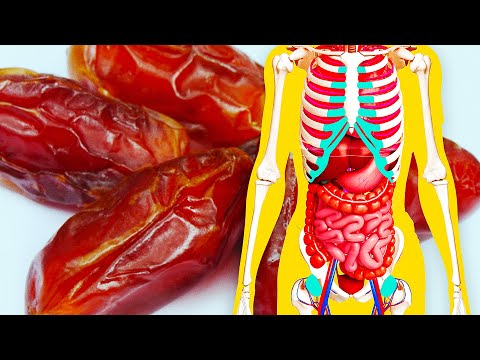

Watch this video on YouTube
They have a high mineral content: copper, iron, magnesium, zinc, manganese, potassium, calcium, fluorine, and others, vitamins: A, C, B1, B2, B6.
The pectin and dietary fiber found in dates reduce the risk of certain cancers and have a beneficial effect on the digestive system. Dates contain no cholesterol at all. The product is low in calories, despite the high content of carbohydrates, so they are recommended instead of sweets during diets.
Since ancient times, it was believed that the fruits of date palms give strength, endurance, increase life expectancy, and enhance the body’s ability to resist various infections.
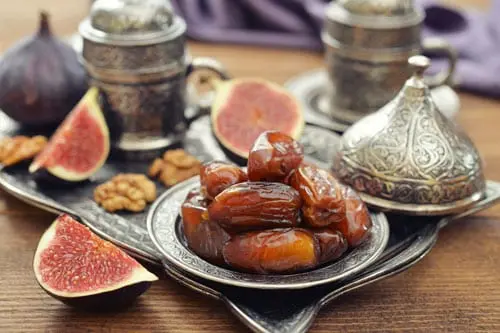

In the recovery period after illness, dates are a good tonic and tonic. Fruits are very nutritious, quickly satisfy hunger and saturate the body with useful substances. They are useful for snacking on a long journey or during a hard day to replenish strength and improve brain activity.
Due to the high concentration of potassium and magnesium in these fruits, doctors recommend using them for cardiovascular diseases. The presence of selenium in dates reduces the likelihood of developing vascular pathologies.
Dates harm
For certain diseases, it is worthwhile to eat dates with caution. And you should also limit their consumption to all people because of the high content of carbohydrates to not exceed the daily requirement.
It is necessary to exclude dates from the diet of diabetics since these fruits have a high glycemic index, which can cause a sharp increase in blood sugar levels. Also, you can not eat them with fructose intolerance and with serious allergic diseases so as not to provoke an attack.
With fructose intolerance, the body cannot digest it and after eating dates, it appeares bloating, and abdominal pain may occur. Sweet fruits can cause tooth decay, so it is advisable to drink dates with liquid or rinse your mouth. Anyone should not eat more than 15 dates a day, and in the morning, as these fruits take a long time to digest.
The use of dates in medicine


Russian scientist Mechnikov recommended using dates for intestinal disorders and constipation. Fiber helps to improve the condition of the intestinal microflora. Pectin has enveloping properties that are beneficial for inflammatory diseases and gastric acidity.
Dates are useful for pregnant and lactating women since the substances in dates contribute to the hormone oxytocin synthesis. It strengthens the walls of the uterus and helps to improve its work. Oxytocin also contributes to the production of breast milk.
In cosmetology, date extract is used as part of various creams and masks. It contains tannin, which restores skin elasticity. Besides, date palm fruit extract has anti-inflammatory and immunomodulatory effects thanks to phytosterols, ursolic acid, and triterpene compounds. They maintain skin tone and slow down the aging process.
Due to its high nutritional value and many useful substances, dates are good for people during the recovery period after illness, during physical exertion, to reduce the feeling of fatigue and apathy. Dates improve nervous activity.
Selenium and magnesium reduce the risk of heart disease, which is extremely beneficial for the elderly.
The use of dates in cooking
Cooks use both dried and fresh dates in cooking. People often eat them simply as a dessert for tea, sometimes stuffed with candied fruits and cheeses, or covered with chocolate. But in addition to direct consumption, some people add dates to dairy products, salads, meat dishes, baked goods. For particular sorts of alcohol and vinegar, dates play a role of a raw material.
Milkshake with dates


A healthy snack. It is good as a second breakfast; in the evening, it is better not to drink the cocktail because of its high sugar content. You can add your favorite berries or cinnamon.
Ingredients
Milk 1% – 300 ml
Dates – 6 pcs
Banana – 1 piece
Cooking
Pour dates with warm water and leave for 10 minutes. Then drain the water and remove the seeds from the fruit. Peel and cut the banana into slices. Place the fruit in a blender, pour over the milk, and puree until smooth.










